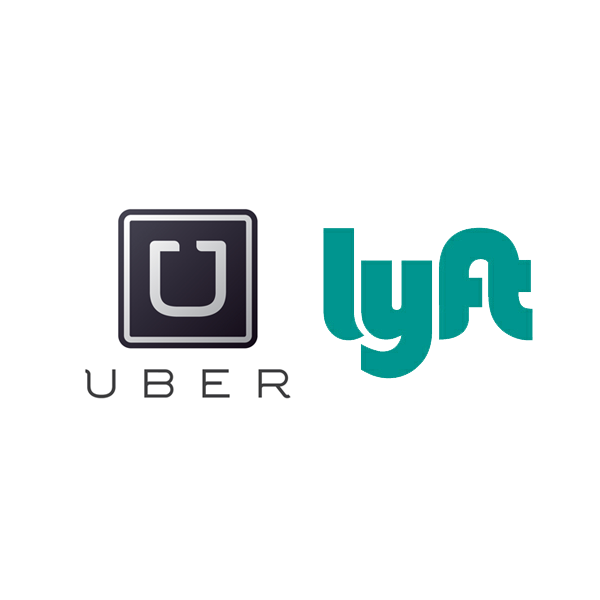If you’ve ever tried to take a cab in the city of Pittsburgh, you know that the entire process is usually a nightmare. Every ‘Burgher has one or ten horror stories about unreliable cabs and shady jitney drivers. And we’ve all had the awkward and embarrassing experience of exposing our out-of-town friends and family to our less than reliable cab service.
But recently, something changed.
Enter Uber and Lyft.
If you’ve never heard of Uber, don’t call it a taxi, or even a rideshare. They prefer, instead, to be known as a “personal driver” service. Lyft, on the other hand is just fine with rideshare, considering they currently rule the peer-to-peer rideshare market in the US.
How Do Uber and Lyft Work?
To sign up for Uber, you simply need to visit the website, create an account, input your information, and give them a credit card. Once you’ve got an account, download the Uber app for your mobile device. Open the app, and login to activate it. From there, you can order a car.
You get several styles to choose from based on personal taste, the number of people in your party, and your budget. You can also view the Uber rating of nearby drivers, to help you choose a friendly provider. Once you’ve chosen the type of ride you’d like, you mark your location. This will alert drivers that there is a user waiting to be picked up. A driver will accept your ride, and you’ll be able to see the GPS location of that car, and you’ll know precisely when it’s going to arrive.
You pay for the ride through the app, so no money or cards need to change hands. In fact, you are not supposed to tip the drivers, ever. A 20% tip is included in the price of the ride. You can also adjust your personal tipping settings within your account.
Lyft works in a similar fashion, though there are marked differences. Lyft will suggest a price (they call it a donation) for your ride, but you choose how much you want to pay. By the way, when you pay more than the suggested donation, your phone lights up with fireworks and celebrates your generosity. Like Uber, you can choose your driver, and you get to see a photo ahead of time, so you know who you’ll be riding with. Discovered your ex is a Lyft driver? Go ahead and pick a new one.
Lyft drivers use their own cars, so you don’t have the same menu of vehicles to choose from, but there are a WIDE variety of Lyft vehicles on the road. But because of the peer rating system, drivers keep their vehicles clean, and their attitude friendly. In fact, you’re supposed to get a fist bump every time you get into a Lyft car, so you feel like you’re riding with a friend.
The PUC Crashes the Proverbial Party
The arrival of Uber and Lyft (with its pink moustaches) is obviously amazing news for anyone who has ever tried to take a cab in the city of Pittsburgh. But as users rejoice in the streets, taxi companies and the Pennsylvania Public Utilities Commission aren’t doing much celebrating.
Uber and Lyft drivers are not employees of those companies. They operate their own vehicles, and services like Uber and Lyft are not structured like traditional taxi companies. As such, they don’t fall under current PUC regulation. The PUC has indicated that they welcome these types of services to the Commonwealth, but have expressed concern over the lack of regulation.
In an effort to regulate rideshare services, the PUC has indicated that it may adopt similar rules as those recently put into place in California that apply to “transportation network companies.” The regs offer a litany of the usual license and certification requirements, which at the outset may seem nitpicky. But they also will require services to carry commercial liability insurance, something they could previously avoid, and something we can all agree is fairly important for a car service.
Taxi companies have also, understandably, been up in arms over the arrival of Uber and Lyft to the Steel City. Customer choice and convenience likely means that users with the means and access to utilize apps will abandon traditional taxis completely (which opens up a whole other can of class-warfare worms). Therefore, they want Uber and Lyft to be held to the current regulations, taxes, certifications, licenses, and fees to which they are held themselves.
The debate will continue for months to come and it will be interesting to see how it all shakes out. And it’s possible it won’t end well for Uber and Lyft, considering how things have gone in cities like Seattle where the local government chose to side with taxi services. But whether you’ve already become an Uber power user, or you’re standing in solidarity with Yellow Cab drivers, one thing is certain – rideshare apps have revolutionized paid transportation.
Technology is Taking Over Transportation
Rideshare technology is nothing new. Zipcar, an online-based car sharing service has been quite successful here in Pittsburgh and across the country. Lyft is a service of Zimride, a rideshare site that got its start way back in 2007. The goal of Lyft is to connect passengers with drivers through mobile apps. It is a social/tech service designed to compete directly with taxis. Lyft is essentially the transportation version of AirBnB. Drivers rent out their personal cars and spend their personal time to take people where they want to go.
Uber and Lyft (and other companies like it) are changing the way passengers travel. They are creating competition in a traditionally closed market space. And they give both drivers and passengers significant control over who they do business with. They are adding vehicular transportation into the new travel shared economy space. Consumers can participate in ride share, bike share, and lodging share. You can plan everything from a summer vacation to a Sunday drive through the sharing economy.
Change is Good
Change is never easy. But innovation moves us all forward, and there comes a time when everyone needs to get on board or let the train pass by. Real estate agents haven’t gone out of business thanks to Trulia and Zillow. Plenty of newspapers and magazines are still making money despite the impact of the internet (Newsweek is back, y’all). Blockbuster video is…a bad example. But it proves the point. Institutions can survive sweeping industry changes if they choose to adapt along with technology and consumer taste.
While we certainly feel badly for taxi drivers who may get hurt in the shuffle, we still can’t help but rejoice that transportation choice has finally arrived in Pittsburgh.

